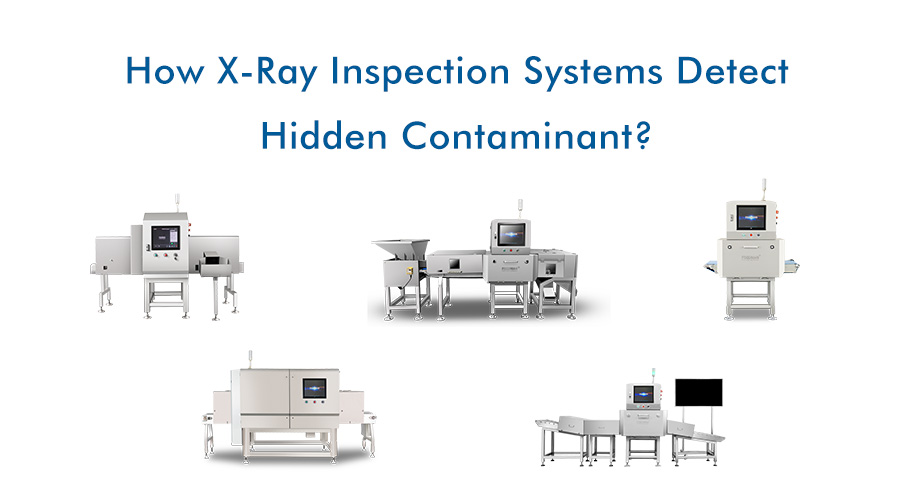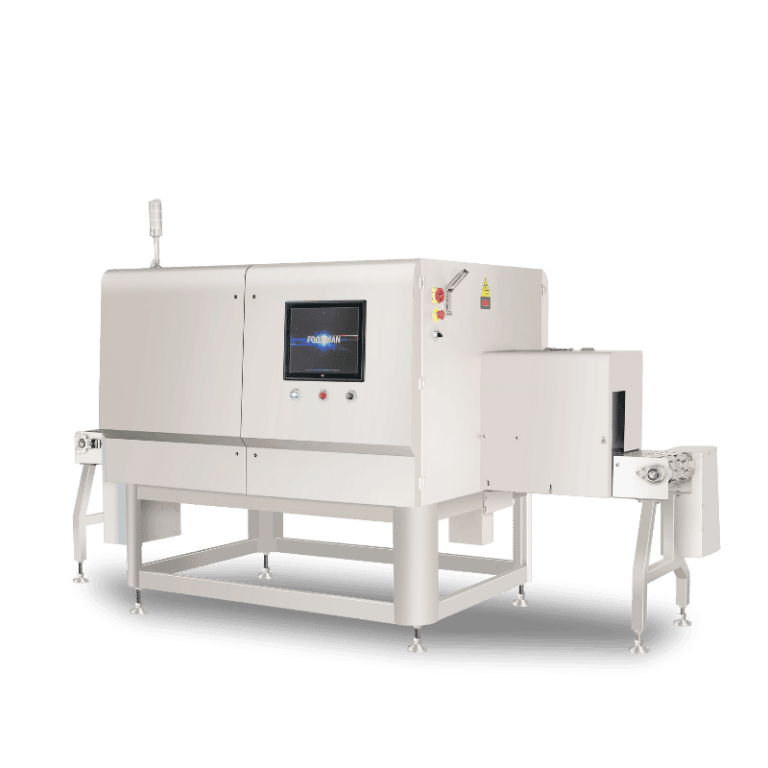Introduction: The Hidden Dangers in Food Processing
In today’s highly regulated food industry, ensuring food quality is more than just a marketing promise—it’s a safety necessity. Hidden contaminants like bone fragments, metal shards, glass, stones, or hard plastic can enter food at various stages of production, posing serious health risks. Traditional methods often fail to detect these threats, especially when they are small or non-metallic. That’s why more manufacturers are turning to X-Ray inspection as a reliable solution. A modern X-Ray inspection system offers real-time detection of a wide range of contaminants without damaging the product, helping companies improve quality control, reduce recalls, and protect their brand. Whether it’s raw materials or packaged goods, an X-Ray inspection machine is now an essential tool for safeguarding both the production line and consumer trust.
Importance of Contaminant Detection in Food Safety
Contaminants, even in trace amounts, can lead to health hazards, lawsuits, and irreversible brand damage. In food processing, the stakes are high—especially when serving vulnerable consumers like children or the elderly. Effective contaminant detection is not just about compliance; it’s about protecting lives. That’s why high-performing X-Ray inspection systems are becoming a critical line of defense in food manufacturing.
Common Invisible Contaminants: Metal, Bone, Glass, Stones, Plastic
Foreign objects in food aren’t always obvious. Some of the most dangerous contaminants are:
Metal fragments, from worn machinery parts.
Bone shards, particularly in meat and fish products.
Glass, from packaging breakage.
Stones, often found in agricultural raw materials.
Hard plastic, from tools, containers, or packaging film.
These materials can go unnoticed by traditional inspection methods but are easily identified with an X-Ray inspection machine, which uses density contrast rather than conductivity.
Why Traditional Detection Methods Often Fall Short
Conventional detection tools like metal detectors and visual checks are limited. They can’t detect non-metallic contaminants or inspect through opaque packaging. As a result, contaminants may remain in the final product, leading to quality failures and safety risks. In contrast, X-Ray inspection systems detect both metallic and non-metallic threats with high precision, ensuring consistent product integrity and meeting today’s demanding safety standards.
The Science Behind X-Ray Inspection Technology
In modern food manufacturing, ensuring food quality and meeting strict quality control standards requires more than visual checks or basic metal detection. This is where X-Ray inspection plays a transformative role. With the ability to detect a wide range of contaminants across all stages of production, a well-integrated X-Ray inspection system offers both precision and efficiency. But how does it actually work? Let’s take a closer look at the science powering this essential technology.
How X-Rays Work in Food Inspection
At the core of every X-Ray inspection machine is the principle of density contrast and absorption. When X-rays pass through a product, different materials absorb radiation at different levels depending on their density. Dense materials—such as metal, glass, bone, or stones—absorb more X-rays and appear darker on the resulting image, making them easy to distinguish from the food product itself.
This density-based imaging makes X-Ray inspection systems highly effective in detecting foreign objects that are invisible to other technologies. Unlike traditional metal detectors, which rely on electrical conductivity and often fail with aluminum packaging or non-metallic contaminants, X-Ray inspection machines are unaffected by packaging type or moisture content.
Key Differences Between X-Ray and Metal Detectors:
Metal Detectors: Only detect ferrous and non-ferrous metals; limited by packaging material and product composition.
X-Ray Inspection Systems: Detect a wide range of materials including metals, glass, bone, stones, and certain plastics; unaffected by foil packaging or high-salt/moisture foods.
What Types of Contaminants Can Be Detected?
One of the strongest advantages of X-Ray inspection technology is its versatility. A single X-Ray inspection system can detect a broad spectrum of contaminants with minimal false positives. Here are some of the common materials it can identify:
Ferrous and Non-Ferrous Metals: Iron, aluminum, stainless steel—all detectable regardless of size or shape.
Glass and Ceramics: Including fragments from jars, bottles, or cooking vessels.
Stones and Bone: Particularly relevant in agricultural or meat-based products.
Rubber and Hard Plastics: Often missed by other methods but easily caught by advanced X-Ray inspection machines.
Case Examples:
Shell Fragments in Seafood: Shell pieces in processed shrimp or crab can be hard to spot manually but show up clearly in X-Ray images.
Stones in Nuts and Dried Fruits: Small stones often mix with harvests and are difficult to detect visually or with metal detectors.
Bones in Fish Fillets: Fine pin bones in deboned fish can be reliably located with high-resolution X-Ray inspection systems.
Whether it’s enhancing food quality, reducing recalls, or streamlining quality control operations, X-Ray inspection machines represent a powerful tool for today’s food manufacturers. The ability to detect a wide range of contaminants in real time gives producers the confidence to meet consumer expectations and comply with global safety standards.
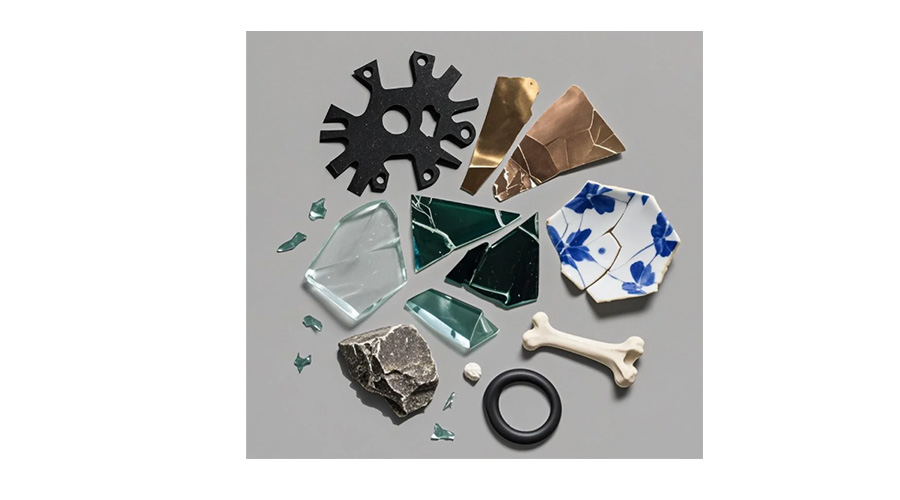
Advanced Detection Capabilities
As food production becomes more complex and consumer expectations for food quality continue to rise, manufacturers need smarter solutions to ensure safety and consistency. Modern X-Ray inspection systems are no longer limited to just detecting metal or glass—they are evolving into intelligent platforms capable of identifying even the most elusive contaminants with remarkable accuracy. Let’s explore the advanced technologies that are redefining X-Ray inspection and setting new standards for quality control.
Dual-Energy Imaging
One of the most transformative upgrades in X-Ray inspection technology is dual-energy imaging. Unlike standard single-energy systems, dual-energy technology captures two sets of X-ray images at different energy levels. This enables better differentiation between the product and foreign matter, especially when contaminants are low-density—such as plastic, rubber, or bones in high-protein foods.
Key Advantages:
Enhanced sensitivity to detect soft contaminants that might otherwise blend into the product.
Improved clarity when inspecting complex, overlapping, or variable-density items like mixed salads, meat with bone, or filled pastries.
More accurate results with fewer false rejects, leading to less waste and higher throughput.
AI and Deep Learning Algorithms
Integrating AI and deep learning into X-Ray inspection machines represents a significant leap forward. These intelligent algorithms can analyze images in real time, recognize complex product features, and learn from production variations to improve accuracy over time.
Benefits:
Real-time image analysis allows for instant detection and classification of anomalies.
Adaptive learning reduces false positives by recognizing subtle differences between actual contaminants and product features like seasoning clusters or natural texture variations.
Customizable models can be trained for specific product lines, such as distinguishing bone from fish muscle or detecting shells in seafood.
By combining AI with X-Ray inspection, manufacturers can achieve higher food quality standards without compromising speed or efficiency.
Multi-View and High-Resolution Sensors
In situations where products are irregularly shaped, bulk-packed, or overlapping—as seen with bakery items, dried fruit mixes, or meat cuts—traditional single-angle scans can miss hidden contaminants. That’s where multi-view technology and high-resolution sensors come into play.
Features and Advantages:
Multi-view X-Ray inspection systems capture images from multiple angles, ensuring contaminants hidden beneath or inside products are revealed.
High-resolution sensors pick up finer details, essential for detecting small bones in fillets or fine glass fragments in sauces.
Better coverage for bulk products or items with complex geometry, leading to a higher level of quality control and reduced customer risk.
Incorporating dual-energy imaging, AI-driven analysis, and multi-view sensors, the latest X-Ray inspection systems go far beyond traditional detection. They offer manufacturers the tools they need to elevate food quality, enhance safety, and build consumer trust—all while maintaining production efficiency. As these technologies continue to advance, the future of food inspection will become smarter, faster, and more reliable than ever before.
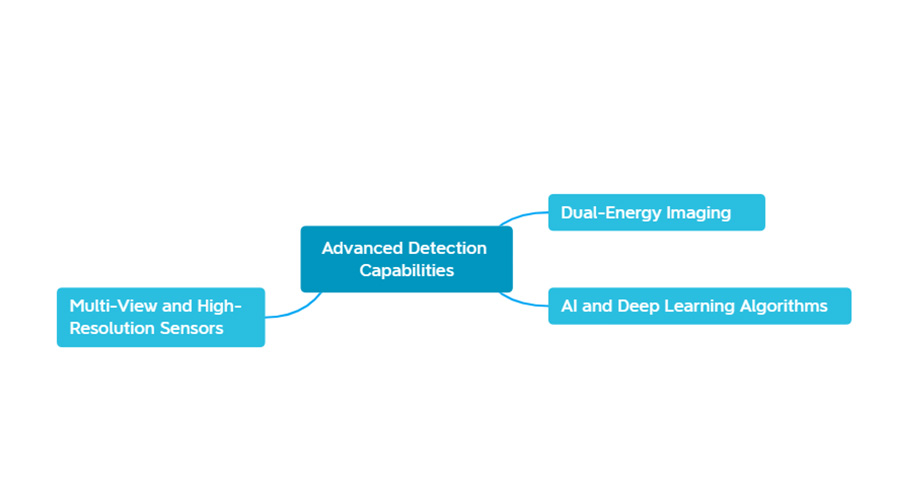
Application Scenarios in the Food Industry
In today’s fast-moving and highly regulated food industry, ensuring product safety and consistency is non-negotiable. From detecting foreign objects to maintaining food quality, modern X-Ray inspection systems play a critical role across various production scenarios. Let’s explore how X-Ray inspection is applied in different sectors of the food industry to strengthen quality control and consumer confidence.
Packaged Products
For manufacturers of packaged goods, X-Ray inspection machines offer a reliable solution to detect contaminants without opening or damaging the packaging. This non-destructive process allows for real-time inspection of items like sealed pouches, trays, cartons, and boxes—maintaining product integrity and production efficiency.
Key Applications:
Detection of foreign objects such as metal fragments, glass shards, or stones inside sealed packages.
Verification of product completeness, ensuring items like snack bars or chocolates are present and intact.
Seal inspection and confirmation of correct product placement within the packaging.
By implementing X-Ray inspection systems in the packaging line, companies can deliver safer products while minimizing costly recalls.
Seafood and Meat Products
Meat and seafood are among the most challenging products to inspect due to their irregular shapes, varying densities, and the risk of hidden hazards like bones or shell fragments. X-Ray inspection technology offers unmatched sensitivity for detecting these threats, even in moist, dense, or frozen conditions.
Benefits:
Identification of bones in fish fillets, poultry, or ground meat products—helping ensure safety and meet export requirements.
Detection of shell fragments in seafood such as shrimp or scallops.
Compliance with international food safety standards and protection of brand reputation in global markets.
With advanced features like dual-energy imaging and AI-based recognition, X-Ray inspection machines enhance detection accuracy in these high-risk categories.
Bakery and Snack Foods
In high-speed production lines typical of the bakery and snack industries, maintaining cleanliness and product quality is both critical and challenging. Crumbly textures, soft fillings, and porous materials make it easy for foreign objects to go unnoticed—unless an effective X-Ray inspection system is in place.
Real-World Use Cases:
Detection of embedded contaminants, such as glass or small stones in baked goods or dough-based products.
Consistent quality control for items like cookies, chips, pastries, and cereal bars—ensuring proper shape, filling, and integrity.
Adaptability to fast-moving production, with systems that can keep up without sacrificing accuracy.
These systems help manufacturers avoid contamination-related recalls while boosting operational efficiency and consumer satisfaction.
From packaged products to fresh proteins and snack foods, X-Ray inspection systems are becoming an essential part of modern quality control strategies. They help ensure every item that reaches the shelf meets the highest standards for food quality and safety—protecting consumers, brands, and supply chains alike.

Benefits of Using X-Ray for Hidden Contaminant Detection
In the complex world of food manufacturing, hidden contaminants pose a serious risk to both consumer safety and brand reputation. Advanced X-Ray inspection systems have become essential tools for detecting these threats and ensuring top-level food quality and quality control. Here, we explore the key benefits of integrating X-Ray inspection into food safety programs.
Higher Detection Accuracy Across Various Materials
One of the standout advantages of X-Ray technology is its ability to detect a wide range of contaminants beyond just metals. Unlike traditional metal detectors, X-Ray inspection machines can identify non-metallic foreign bodies such as glass, stones, bones, ceramics, rubber, and hard plastics. This higher detection accuracy ensures that even the most elusive contaminants are caught early in the production line, reducing the risk of unsafe products reaching consumers.
Reduced Recall Risks and Brand Protection
Product recalls can be costly and damaging to brand reputation. By employing X-Ray inspection, manufacturers minimize the chances of contaminated products leaving the facility. The technology’s ability to detect foreign objects inside sealed packaging without compromising product integrity significantly lowers recall risks. This proactive safety measure acts as a strong brand protection asset, demonstrating a commitment to delivering safe, high-quality food.
Supports HACCP, BRC, and Global Food Safety Compliance
Global food safety standards like HACCP (Hazard Analysis and Critical Control Points), BRC (British Retail Consortium), and other regulatory frameworks require robust contaminant detection and traceability. X-Ray inspection systems support these compliance efforts by providing detailed inspection records and ensuring contaminants are identified and removed at critical control points. This helps manufacturers meet stringent audit requirements, streamline documentation, and maintain international certifications.
Enhances Customer Trust and Product Consistency
Trust is the foundation of customer loyalty in the food industry. By integrating X-Ray inspection into production, companies can guarantee consistent product safety and quality. This consistency reassures consumers and retail partners that every package meets high safety standards. Moreover, the transparency provided by X-Ray inspection data supports marketing efforts focused on quality assurance and builds stronger relationships with end-users.
In conclusion, the benefits of X-Ray inspection for hidden contaminant detection are clear: superior accuracy, reduced risks, regulatory compliance, and strengthened consumer trust. For food manufacturers committed to excellence in quality control and food quality, investing in advanced X-Ray technology is a strategic imperative that delivers measurable returns.
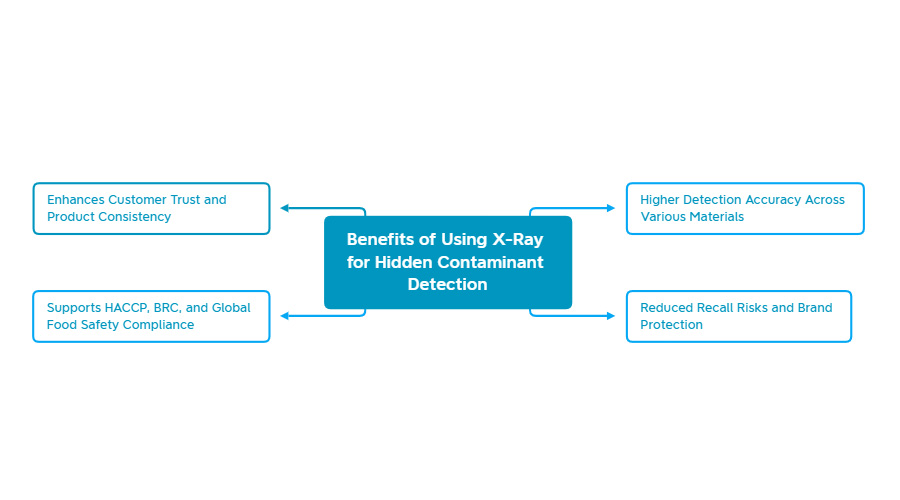
Conclusion: Making the Invisible Visible
Ensuring food safety in today’s complex production environment requires more than traditional inspection methods. X-Ray inspection systems have revolutionized how manufacturers detect hidden contaminants, providing unparalleled visibility into what the eye—and even metal detectors—cannot see.
X-Ray Systems Reveal What the Eye (And Magnet) Can’t See
Many contaminants in food products are invisible to human inspectors and beyond the detection scope of traditional metal detectors. Materials such as glass shards, stones, bones, ceramics, and hard plastics can easily be missed, posing serious safety risks. X-Ray inspection machines use advanced imaging technology to uncover these hidden threats without damaging packaging or products, ensuring comprehensive quality control and enhancing food quality.
Investing in X-Ray Technology Is Key for Modern Food Safety
With increasing regulatory demands and consumer expectations, investing in X-Ray inspection systems is no longer optional—it’s essential. These systems not only improve detection accuracy but also reduce recall risks and protect brand reputation. Their ability to integrate seamlessly into production lines helps manufacturers maintain compliance with global food safety standards such as HACCP and BRC, while boosting operational efficiency.
Next Steps: System Selection, Customization, And Integration
To maximize the benefits of X-Ray inspection, manufacturers should carefully evaluate system options based on their specific product types, contamination risks, and production volumes. Customization is key—whether through dual-energy imaging, AI-powered analysis, or multi-view sensors—to tailor detection capabilities precisely. Effective integration into existing production workflows ensures minimal disruption and optimal performance.
Working with experienced suppliers who understand your industry’s unique challenges can streamline implementation and provide ongoing support. By taking these next steps, food manufacturers can turn invisible risks into visible solutions, safeguarding consumers and strengthening their market position.
FAQ
Q1: Why are traditional inspection methods often insufficient for detecting contaminants in food products?
A: Traditional methods like visual checks and metal detectors can only detect metallic contaminants and are limited by packaging materials and product composition. They often miss non-metallic hazards such as glass, bones, stones, ceramics, and hard plastics, which pose serious safety risks.
Q2: How do X-Ray inspection systems detect hidden contaminants in food?
A: X-Ray inspection systems use density contrast imaging, where X-rays pass through food products and dense materials like metal, glass, bone, or stones absorb more radiation and appear clearly on images. This allows detection of both metallic and non-metallic contaminants without damaging packaging or products.
Q3: What are some common contaminants that X-Ray inspection machines can detect?
A: These systems can identify a wide range of contaminants including ferrous and non-ferrous metals (iron, aluminum, stainless steel), glass, ceramics, stones, bone fragments, rubber, and hard plastics, which are often invisible to other detection methods.

